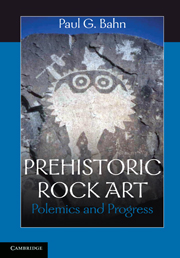Book contents
- Frontmatter
- Contents
- Figures
- Foreword by H. C. Woodhouse
- Acknowledgements
- Introduction
- 1 Art on the rocks
- 2 Myths and meanings
- 3 The emperor's new clothes I: sloppy tailoring
- 4 The emperor's new clothes II: fashion disasters
- 5 Location, location, location
- 6 The votive motive
- 7 Mustn't crumble
- Conclusion
- Select bibliography
- Index
5 - Location, location, location
Published online by Cambridge University Press: 05 June 2012
- Frontmatter
- Contents
- Figures
- Foreword by H. C. Woodhouse
- Acknowledgements
- Introduction
- 1 Art on the rocks
- 2 Myths and meanings
- 3 The emperor's new clothes I: sloppy tailoring
- 4 The emperor's new clothes II: fashion disasters
- 5 Location, location, location
- 6 The votive motive
- 7 Mustn't crumble
- Conclusion
- Select bibliography
- Index
Summary
All knowledge that is not the real product of observation, or of consequences deduced from observation, is entirely groundless and illusory.
Jean-Baptiste LamarckSeeing that the shamanistic theories are nonsense, is the quest for meaning hopeless? Not at all, as already shown in Chapter 2, as long as it is based on solid (and undistorted) ethnography. Even though we cannot question the original artists about what they were doing, they have left us some crucial pieces of solid evidence which remain unchanged – the places where they chose to put images. It is the location of some rock art (particularly in Ice Age caves) which can provide vital clues to intention, and which proves that some rock art was clearly religious in some way. At different scales – such as position in the landscape, setting within a location, and position on a rock or wall – a great deal can be learned from the degree of visibility of the art: for example, whether it was meant to be seen by many people or a few, or even by no one at all. Also, in the case of some deep caves (most notably in Le Tuc d'Audoubert), such physical effort was required to reach the decorated area that there must have been some very strong motivation involved.
Tangible and intangible
One of the most important and useful factors inherent in the study of rock art or cave art is that its location has not changed – it is still precisely where the artist chose to put it, and in looking at it one is occupying the same space which the artist (whether standing, crouching, or even lying down) occupied during the execution of the images.
- Type
- Chapter
- Information
- Prehistoric Rock ArtPolemics and Progress, pp. 137 - 159Publisher: Cambridge University PressPrint publication year: 2010



